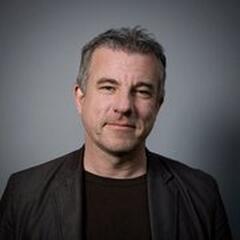Essential Amsterdammers: Paul Spies
Essential Amsterdammers every expat should know: Paul Spies - Head of the Amsterdam Museum
The Amsterdam Museum formerly had "historical" attached to its name, but its director, Paul Spies, moved to change this when he became its head. His ambition is for visitors to come through the main exhibition in the museum to get a good overview of his city’s recent and not-so-recent history in just 45 minutes. That way they would have a basic historical overview before going on to explore the canals and streets.
Paul is a specialist in the history of the grachtengordel (girdle of canals around the old city), and effortlessly intrigues with his explanation of the four kinds of light around that make it so special.
It is a gift to be able to tell history as a story, and Paul has that talent.
Amsterdam canals
People always assume the pattern of the canals was created to make the city beautiful, but I have to stress that the grachtengordel was designed for practical reasons, as a communal concept. It brought together a very diverse community of people.
Trade was the most important reason for waterways throughout the city. Everything naturally went by boat in Holland, therefore traders wanted their goods to be loaded or unloaded directly at their houses. A merchant would store his goods on the top floor of his house and sell them at street level.
Without a monarch, who might have wanted a Roman-style layout (as happened in other major European cities), the development authorities could make pragmatic decisions. The city centre already had a half-moon form at the water’s edge, so they made a crescent shape to surround the centre. Canals were dug to radiate away from fortifications along the water designed to repel the Spanish and French.
Business is business
This trade-focused plan had an influence on the then homogeneous society of Amsterdam. There were many rich people around the year 1600, but also a new developing class of merchant traders who had some money - and were working like crazy to make more.
Richer inhabitants lived in the canal houses, while the backstreets were used for the coach houses and servants’ quarters. So, if you were rich, your house backed onto places where the poorer people lived. The shops and craftspeople used the streets that crossed all the canals; the Jordaan was the industrial area where the working people set up home. The different groups would meet each other in the streets and in church and got to know each other as a result.
Was it planned that this construction would contribute to our tolerance, or was it just an outcome? You know, everything in Amsterdam is an outcome!
Brilliant architect
In the 19th century, everyone was looking for the brilliant architect behind the design of the canals, yet they could not find him. Finally they had to accept there was no architect - just an opportunity and circumstances which made this construction the most logical.
One architect, Berlage, praised the beauty of the canals, and tried to analyse it. He concluded that it is partly because there is a rhythm and consistency to the combination of buildings and water, even though each house is different. This beauty comes from the constant curve of the water and the streets alongside it.
If the canals were straight, you would have a distant horizon, but the curves cause the close horizon to change constantly as you walk. Varying light is key too, and you can make a comparison with New York. There, the sun comes from the side and you have enormous long streets - also very interesting - but the sun is constantly coming from the same place as you walk in one direction. In Amsterdam, nothing is straight.
There are many trees by the canals too; light is filtered through their leaves, creating continuous movement and play. A constant wind also moves the leaves so the light is continually changing. The trees are Dutch elms, which have a resin and shine to them, and that reflects the sunshine. Finally, the water reflects the light in a continually changing pattern.
On top of all this, the gables of each house are at slightly different heights, so the light is again changing as you move around the canal circle. On a dark day, the canals are attractive, but it is not the same as on a sunny day when the light is doing so many different things.
Four essential elements
Firstly you have vrijdenken - free thinking. This is the basis for all aspects of the city development and it came from water being the common enemy that bound Hollanders together. You could not spend too much time deciding whether you liked your neighbour or not; you had to get on and work together regardless. I believe our famed tolerance comes from this. Some would say it was forced tolerance, not by choice, and they could be right.
Then you have ondernemerschap, meaning entrepreneurship. The concept of shares and trading originated in Holland and the voyages to the Spice Islands were financed by risk-taking groups of entrepreneurs. The "start-up" business culture is still very strong here, and that relies too on creativiteit, or creativity. Finally, you have burgerschap, which you could translate as being a member and a part of the city, contributing to it.
These four concepts are interlinked. That combination is surely the essence of Amsterdam.
Part of this interview with Paul Spies has previously been published in "Amsterdam... The Essence," by David Beckett.
Photography by Caro Bonink (colour portrait) and Pim Kops (B&W city picture).


COMMENTS
Leave a comment